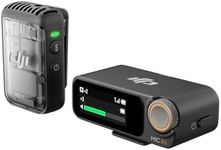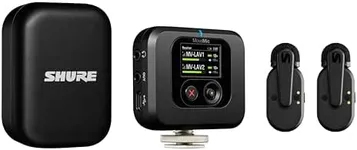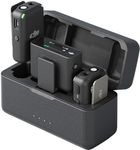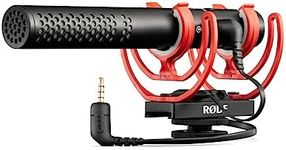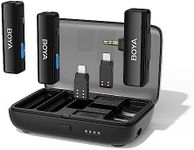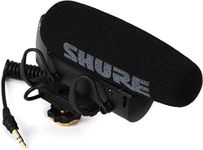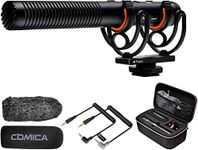Buying Guide for the Best Camera Microphones
Choosing the right camera microphone can make a huge difference in the quality of your audio recordings, whether you're filming videos, conducting interviews, or capturing live events. The right microphone will help you capture clear, crisp sound and reduce unwanted background noise. To find the best fit, it's important to understand the different types of microphones and the key features that affect their performance. Think about where and how you'll be using the microphone, as this will guide your decision.Microphone TypeThe type of microphone refers to its design and how it captures sound. The most common types for cameras are shotgun, lavalier (lapel), and stereo microphones. Shotgun microphones are highly directional and pick up sound from the front, making them great for interviews or focused audio. Lavalier microphones are small and clip onto clothing, ideal for hands-free use and capturing voices up close. Stereo microphones capture sound from a wider area, providing a more immersive audio experience, which is useful for recording ambient sounds or music. Choose the type based on your main recording needs: focused dialogue, hands-free interviews, or ambient sound.
Directionality (Polar Pattern)Directionality, or polar pattern, describes how a microphone picks up sound from different directions. Common patterns include cardioid (front-focused), omnidirectional (all directions), and supercardioid/shotgun (very narrow front focus). Cardioid mics are good for general use and reducing side noise, omnidirectional mics are best for capturing sound from all around (like group discussions), and shotgun mics are perfect for isolating sound from a specific subject. Consider your environment: if you need to block out background noise, a more directional mic is better; if you want to capture everything around you, go for omnidirectional.
ConnectivityConnectivity refers to how the microphone attaches to your camera or recording device. Some microphones use a standard 3.5mm audio jack, others use XLR connectors (more professional), and some connect wirelessly via transmitters and receivers. Make sure the microphone is compatible with your camera's input. Wired connections are reliable and simple, while wireless options offer more freedom of movement but may require batteries and setup. Choose based on your need for mobility and your camera's available ports.
Power SourceMicrophones can be powered in different ways: some draw power from the camera (plug-in power), others use internal batteries, and professional models may require phantom power from an audio interface. Battery-powered mics are portable but need regular charging or battery changes. Plug-in powered mics are convenient if your camera supports it. Consider how long you'll be recording and whether you want to avoid dealing with batteries.
Size and MountingThe size and mounting options of a microphone affect how easy it is to use with your camera setup. Larger microphones may offer better sound quality but can be bulky, while compact mics are more portable. Some microphones mount directly onto the camera's hot shoe, while others require separate stands or clips. Think about your shooting style: if you move around a lot, a small, camera-mounted mic is convenient; for stationary setups, size is less of an issue.
Wind ProtectionWind protection refers to features like foam covers or furry 'deadcats' that reduce wind noise when recording outdoors. Some microphones come with built-in windshields, while others require you to add them. If you plan to record outside, wind protection is essential for clear audio. For indoor use, this is less important.
